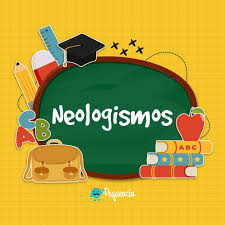What is neologism and why are they formed? Who can coin new words and through which channels do they spread? Is it possible to trace the moment in which they are born and identify their authors? Are modern news and radio and television information platforms and social networks able to influence the change in customs and linguistic uses?.

The neologisms are those words or twists that are introduced into one language to use force, and also to acquire new meanings to existing words already. For example: click , emoticon , browser .A neologism can emerge as a new lexeme from within the language as a transformation or derivation of an existing one (more common situation), although they are often voices imported from other languages: they are called foreign words or lexical loans.

Examples of Neologism
| Truffle | Browser |
| Chat | Hypertext |
| Server | Interface |
| Click | Selfie |
| Scan | Emoticon |
| Cyberspace | Homebanking |
| UFO | Oenegé |
| Antivirus | Escrache |
| Seropositive | Texting |
| Thief in motorcycle | Webgraphy |
Neologisms are often controversial and resisted by certain cultured or very purist sectors of the language, who believe that they tend to deform it or take away its essential features. Others, on the contrary, think that neologisms enrich languages by revitalizing them.
It is true that sometimes these terms are not really necessary ( superfluous neologisms ), but often they are more graphic or summarize in a single word what, to say it in the traditional way, would require several words.
The mass media are great propagators of neologisms, often superfluous, like “receiving” (which has finally been incorporated into the Dictionary of the Royal Academy of Letters).
List of neologisms
A necessarily partial list of neologisms would include the following:
- Bullying . A term borrowed from English to refer to school or workplace bullying. It comes from Bully , “abusive, abusive.”
- Brainstorming . Another foreignism coming from English, literally translates “Brain storm”, and refers to a very popular creativity technique that involves saying all the ideas that come to mind about a topic.
- Scratch . A verb widely used in the variants of Spanish in southern South America (Argentina and Uruguay) but which became popular until it became common. It means “to speak ill of someone” or “to leave someone unkind to third parties”, but it is used above all in a sense of popular denunciation similar to lynching.
- Hacker . Coming from English, it is a term that denotes a hacker or a user with great knowledge of the Internet. It comes from the verb to Hack (“Enter without authorization”).
- Hoax . Another loan from English, alludes to a false news or a malicious deception, usually in the field of social networks .
- In the ube . It does not literally refer to clouds, but to the Internet and online storage, which seems to store information “on the air.” Thus: “save in the cloud” or “leave in the cloud”.
- Selfie . Coming from the English word self (“oneself”), it is a term put in fashion by social networks and the front cameras of cell phones, which allow you to photograph yourself.
- Seropositive . A term developed to refer to the condition of people infected with the HIV virus, known as serpositives from the result of the screening test for the disease.
- Tweet . Derived from the English tweet (“tweet”, onomatopoeia of the birds), a term that was established from the use of the social network Twitter and its particular imagery.
- Viral . Initially with a medical or biological meaning (related to viruses), this term gained a specific meaning in the world of social networks and the Internet, since it serves to refer to content that is replicated by many and therefore is transmitted quickly. , like computer viruses used to do. Thus it became a valuation term.
- Wifi . Pronounced uifi or uaifai , it refers to wireless data transmission networks by radio waves. It comes from the name of the company that certifies the standards in this regard: the Wi-Fi ( Wireless Fidelity ) brand .
Formation of Neologism
Neologisms can be formed in different ways. Mainly, they arise by composition, by derivation, as a loan from other languages or by mere invention or popular creation, among others.
- By composition: they are words that are formed from the union of two or more previously existing words in the language. For example: multi-area, ecosocialism, cyberterrorism, Euroregion.
- By derivation: are the words that appear as a derivation of neologisms. So, for example, chat would derive chat, chat.
- By parasynthesis: they are those words that combine composition and derivation at the same time. For example: beggar, middle class.
- For acronym: they are those words that are formed with the initials of several words. For example: UFO, which comes from the acronym for Unidentified Flying Object (UFO).
- On loan: these are words from other languages that we adapt to our language to designate new realities: soccer, whiskey, laptop, blog, hypertext.
